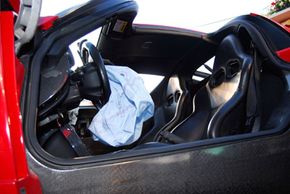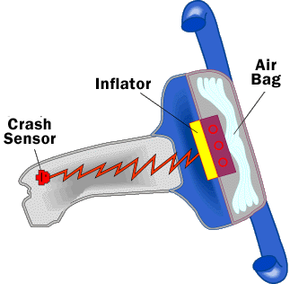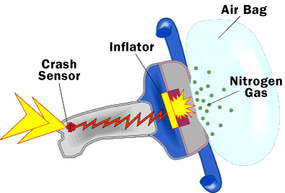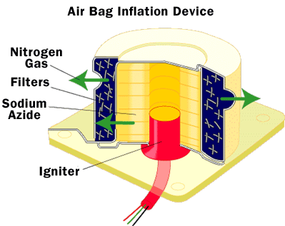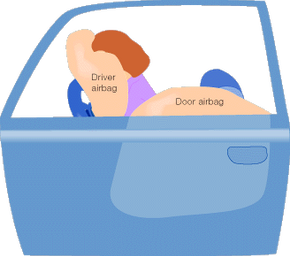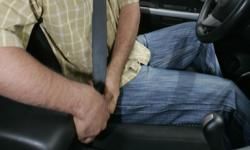For years, the trusty seat belt provided the sole form of passive restraint in our cars. There were debates about their safety, especially relating to children, but over time, much of the country adopted mandatory seat-belt laws. Statistics have shown that the use of seat belts has saved thousands of lives that might have been lost in collisions.
Like seat belts, the concept of the airbag -- a soft pillow to land against in a crash -- has been around for many years. The first patent on an inflatable crash-landing device for airplanes was filed during World War II. In the 1980s, the first commercial airbags appeared in automobiles.
Advertisement
Since model year 1998, all new cars sold in the United States have been required to have airbags on both driver and passenger sides. (Light trucks came under the rule in 1999.) To date, statistics show that airbags reduce the risk of dying in a direct frontal crash by about 30 percent. Then came seat-mounted and door-mounted side airbags. Today, some cars go far beyond having dual airbags to having six or even eight airbags. Having evoked some of the same controversy that surrounded seat-belt use in its early years, airbags are the subject of serious government and industry research and tests.
In this article, you'll learn about the science behind the airbag, how the device works, what its problems are and where the technology goes from here.
Laws of Motion
Before looking at specifics, let's review our knowledge of the laws of motion. First, we know that moving objects have momentum (the product of the mass and the velocity of an object). Unless an outside force acts on an object, the object will continue to move at its present speed and direction. Cars consist of several objects, including the vehicle itself, loose objects in the car and, of course, passengers. If these objects are not restrained, they will continue moving at whatever speed the car is traveling at, even if the car is stopped by a collision.
Stopping an object's momentum requires force acting over a period of time. When a car crashes, the force required to stop an object is very great because the car's momentum has changed instantly while the passengers' has not -- there is not much time to work with. The goal of any supplemental restraint system is to help stop the passenger while doing as little damage to him or her as possible.
What an airbag wants to do is to slow the passenger's speed to zero with little or no damage. The constraints that it has to work within are huge. The airbag has the space between the passenger and the steering wheel or dashboard and a fraction of a second to work with. Even that tiny amount of space and time is valuable, however, if the system can slow the passenger evenly rather than forcing an abrupt halt to his or her motion.
In the next section, we'll look at the parts of an airbag and see how it inflates.
Advertisement
